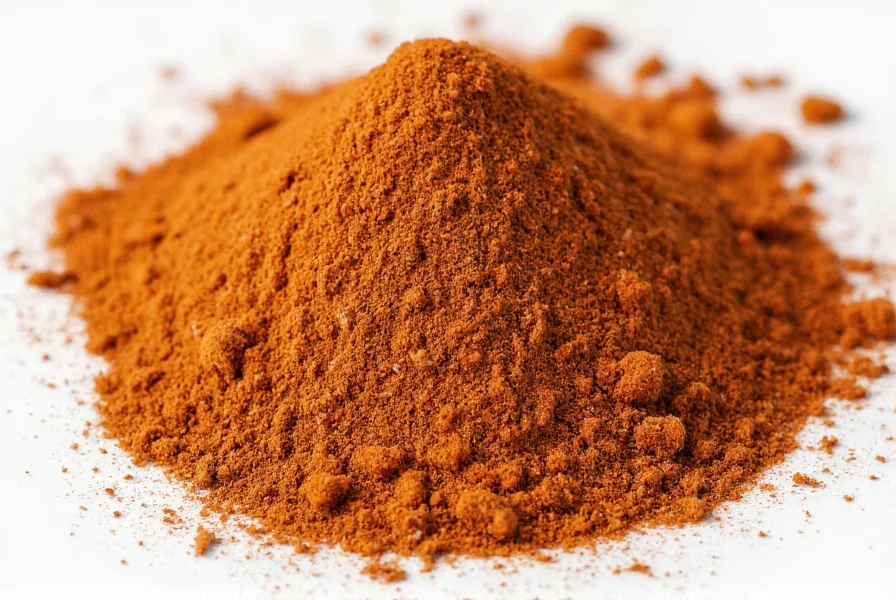Understanding the precise flavor characteristics of cumin is essential for both novice cooks and experienced chefs. This ancient spice, derived from the Cuminum cyminum plant's seeds, delivers a unique sensory experience that has made it indispensable in global cuisines for thousands of years.
The Complete Flavor Profile of Cumin
When properly used, cumin offers a multifaceted taste experience that goes beyond simple description. The primary flavor notes include:
- Earthy foundation - The dominant characteristic that provides depth to dishes
- Warm nuttiness - Similar to toasted almonds but with more complexity
- Subtle citrus undertones - Particularly noticeable in freshly ground cumin
- Mild peppery heat - Not spicy like chili, but provides gentle warmth
- Smoky dimension - Especially pronounced when seeds are dry-toasted
Unlike many spices that offer a single dominant note, cumin's flavor evolves as it interacts with other ingredients and cooking methods. This complexity explains why it's featured prominently in spice blends from Mexican, Indian, Middle Eastern, and North African culinary traditions.
Ground Cumin vs. Whole Cumin Seeds: Taste Differences
The form in which you use cumin significantly impacts its flavor expression:
| Characteristic | Whole Cumin Seeds | Ground Cumin |
|---|---|---|
| Flavor intensity | Milder when raw, intensifies when toasted | Immediately potent, more consistent flavor |
| Aromatic profile | More citrus-forward notes | Deeper earthiness, less bright |
| Heat development | Releases gradually during cooking | Instant integration with other ingredients |
| Shelf life | 6-12 months (longer flavor retention) | 3-6 months (flavor degrades faster) |
Professional chefs often recommend toasting whole cumin seeds in a dry pan for 1-2 minutes until fragrant before grinding them fresh. This technique maximizes the spice's aromatic compounds and creates a noticeably richer cumin taste profile compared to pre-ground versions.

How Cooking Technique Affects Cumin's Flavor
The way you incorporate cumin into dishes dramatically influences its final taste:
- Dry toasting - Enhances nuttiness and reduces bitterness (ideal for whole seeds)
- Blooming in oil - Releases essential oils, creating a more integrated flavor (add early in cooking)
- Adding late in cooking - Preserves brighter top notes but results in more pronounced individual spice flavor
- Overheating - Causes bitterness; never burn cumin
Understanding these techniques helps prevent the common mistake of why does cumin taste bitter in many home-cooked dishes. The bitterness typically results from either using stale cumin or overheating the spice during cooking.
Cumin Compared to Similar Spices
Many people confuse cumin with other spices. Here's how its taste differs from common alternatives:
- Cumin vs. Coriander - Coriander offers citrusy, floral notes with mild sweetness, while cumin delivers earthy warmth with subtle bitterness
- Cumin vs. Caraway - Caraway has stronger anise/licorice notes, whereas cumin maintains earthy dominance with citrus undertones
- Cumin vs. Fennel - Fennel is distinctly sweet and licorice-like, completely different from cumin's earthy profile
This distinction explains why substituting these spices often fails to deliver authentic results in recipes specifically designed for cumin's unique earthy taste of cumin.
Best Culinary Applications for Cumin's Flavor
Certain dishes showcase cumin's taste profile exceptionally well:
- Mexican cuisine - Essential in chili powders, taco seasoning, and bean dishes where its earthiness complements tomatoes and peppers
- Indian cooking - Foundation of many curry blends, particularly effective with lentils and root vegetables
- Middle Eastern dishes - Key component in falafel, hummus, and meat marinades
- North African tagines - Combines beautifully with preserved lemons and olives
For optimal flavor integration, add ground cumin early in the cooking process to allow its oils to fully incorporate. When using whole seeds, toast them first to unlock their complete how to describe cumin taste complexity before adding to dishes.

Common Mistakes That Ruin Cumin's Flavor
Avoid these frequent errors that compromise cumin's distinctive taste:
- Using expired cumin - Loses aromatic compounds and develops stale, dusty flavor
- Burning the spice - Creates unpleasant bitterness that dominates the dish
- Adding at the wrong time - Late addition makes the flavor stand out rather than blend
- Incorrect measurements - Too little provides no impact; too much overwhelms other flavors
For the most authentic cumin flavor profile, purchase small quantities from stores with high spice turnover, store in airtight containers away from light, and replace every 6 months for ground cumin or 12 months for whole seeds.
Perfect Pairings for Cumin's Distinctive Taste
Certain ingredients complement cumin's flavor exceptionally well:
- Acidic components - Lime juice or vinegar balances cumin's earthiness
- Garlic and onions - Create foundational flavor layers that enhance cumin's warmth
- Paprika and chili powder - Add complementary heat without competing flavors
- Lemon zest - Highlights cumin's subtle citrus notes
- Cilantro - Provides fresh contrast to cumin's earthy depth
Understanding these pairings helps create balanced dishes where cumin contributes to the overall flavor profile rather than dominating it. This knowledge proves invaluable when exploring best dishes for cumin flavor across different culinary traditions.











 浙公网安备
33010002000092号
浙公网安备
33010002000092号 浙B2-20120091-4
浙B2-20120091-4